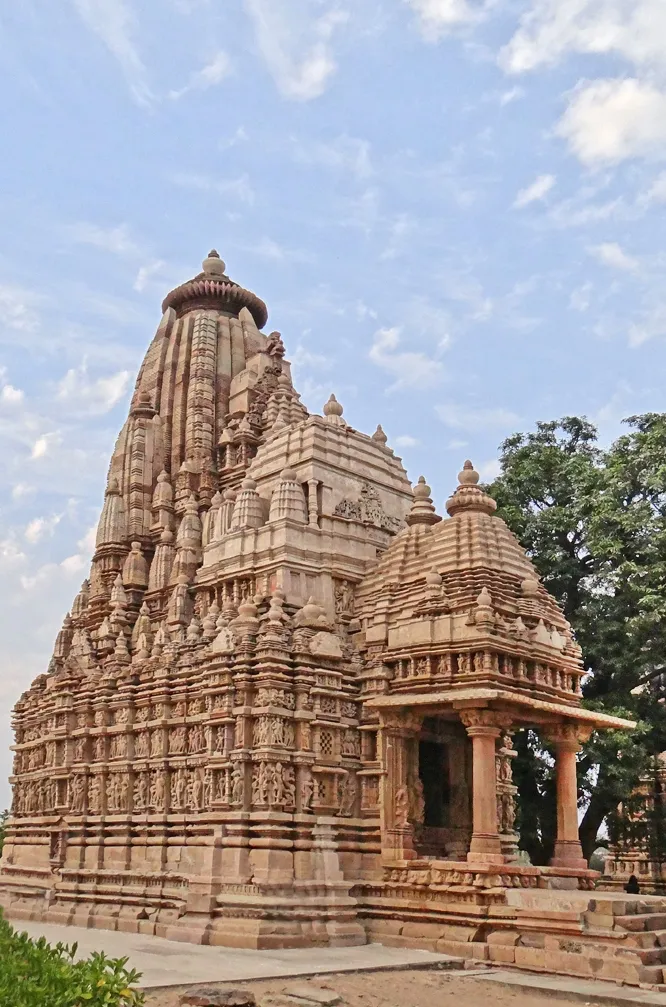The Parshvanatha temple is a renowned Jain temple located at the Khajuraho Group of Monuments in Madhya Pradesh, India. Dedicated to Parshvanatha, the 23rd Tirthankara of Jainism, it is an exquisite example of medieval Indian architecture. The temple stands out for its intricate stone carvings and detailed sculptures. It forms an integral part of the Khajuraho complex, which is a UNESCO World Heritage Site. The temple’s historical significance is amplified by its religious importance and architectural brilliance.
Get your dose of History via Email
Historical Background of Parshvanatha Temple
The Parshvanatha temple was built during the reign of the Chandela dynasty in the 10th century AD. It is named after Parshvanatha, a revered figure in Jainism. The temple was discovered by the British engineer T.S. Burt in the 19th century. The Chandelas, known for their patronage of art and architecture, created this temple as part of their extensive temple complex. Over time, the temple has seen various additions and renovations. It has stood the test of time, witnessing the ebb and flow of empires and cultures.
Architecturally, the temple is a part of the eastern group of Khajuraho temples. It is less ornate than the other temples in the complex, reflecting the Jain ethos of simplicity. The temple’s construction date is not precisely known, but it is generally attributed to the late 10th century. The temple has not been the scene of any historically significant events but remains an important pilgrimage site for followers of Jainism.
Unlike many other temples at Khajuraho, the Parshvanatha temple has not been dedicated to a Hindu deity. This highlights the religious diversity and tolerance of the Chandela rulers. The temple has undergone restoration work under the Archaeological Survey of India to preserve its original grandeur. The temple’s preservation allows visitors to witness the architectural prowess of ancient Indian craftsmen.
The Parshvanatha temple’s discovery by Western scholars brought it international attention. It has since become an important site for the study of medieval Jain art and architecture. The temple’s sculptures and carvings provide insights into the cultural and religious life of the period. The temple complex attracts scholars, historians, and tourists from around the world.
Today, the Parshvanatha temple stands as a testament to the architectural and spiritual legacy of the Jain community. It continues to be a site of worship and a symbol of the Jain religion’s rich heritage. The temple’s historical and cultural significance is recognized globally, making it a vital part of India’s diverse religious landscape.
About Parshvanatha Temple
The Parshvanatha temple is a stunning example of Indo-Aryan architecture. It is made of fine sandstone and features a series of intricate carvings and sculptures. The temple’s design includes a sanctum, a vestibule, a mandapa (hall), and an entrance porch. The temple’s spire (shikhara) is adorned with sculptural patterns and rises majestically above the sanctum.
The temple’s exterior walls are embellished with detailed carvings depicting various figures, including the Jain Tirthankaras. The carvings also include apsaras (celestial maidens), animals, and floral motifs. The temple’s interior is simpler, with a focus on the idol of Parshvanatha made of black stone, which is the central deity of the temple.
The construction techniques of the Parshvanatha temple reflect the advanced skills of the Chandela craftsmen. The temple’s layout is based on precise mathematical calculations and symmetry. The use of interlocking stones without mortar showcases the builders’ ingenuity. The temple’s durability is a testament to their mastery of stone construction.
Architectural highlights of the Parshvanatha temple include the torana (gateway) above the sanctum door, which is a characteristic feature of Jain temples. The temple’s balconies, although not functional, add to the aesthetic appeal. The temple’s platform, or jagati, elevates it and provides a circumambulatory path for devotees.
The Parshvanatha temple’s design and construction methods have influenced subsequent temple architecture in the region. Its harmonious proportions and decorative elements are considered masterpieces of Indian temple architecture. The temple remains a source of inspiration for architects and historians alike.
Theories and Interpretations
The Parshvanatha temple has been the subject of various theories and interpretations. Its purpose, as a place of worship and meditation for Jain monks and laity, is well-established. However, the meanings behind its sculptures and carvings have intrigued scholars. Some suggest that the carvings represent the values and teachings of Jainism, while others see them as purely decorative.
There are mysteries surrounding the temple, particularly regarding the symbolism of certain sculptures. The presence of erotic sculptures in a Jain temple has led to various interpretations. Some scholars argue that these represent the worldly desires that one must overcome to achieve spiritual enlightenment.
The temple’s architectural style has been compared to other regional temples to understand the evolution of temple design. The Parshvanatha temple’s less ornate style, compared to Hindu temples, reflects the Jain philosophy of austerity. This has been interpreted as a deliberate choice by the Jain community to distinguish their places of worship.
Dating the temple has involved examining architectural styles and inscriptions. Carbon dating is not applicable to stone structures, so historians rely on stylistic analysis and historical records. The consensus places the temple’s construction in the late 10th century, during the height of the Chandela dynasty’s power.
The interpretations of the Parshvanatha temple contribute to our understanding of medieval Indian society. They provide insights into the religious practices, social norms, and artistic expressions of the time. The temple remains a focal point for studies on Jain art and architecture.
At a glance
Country: India
Civilization: Chandela dynasty
Age: 10th century AD

